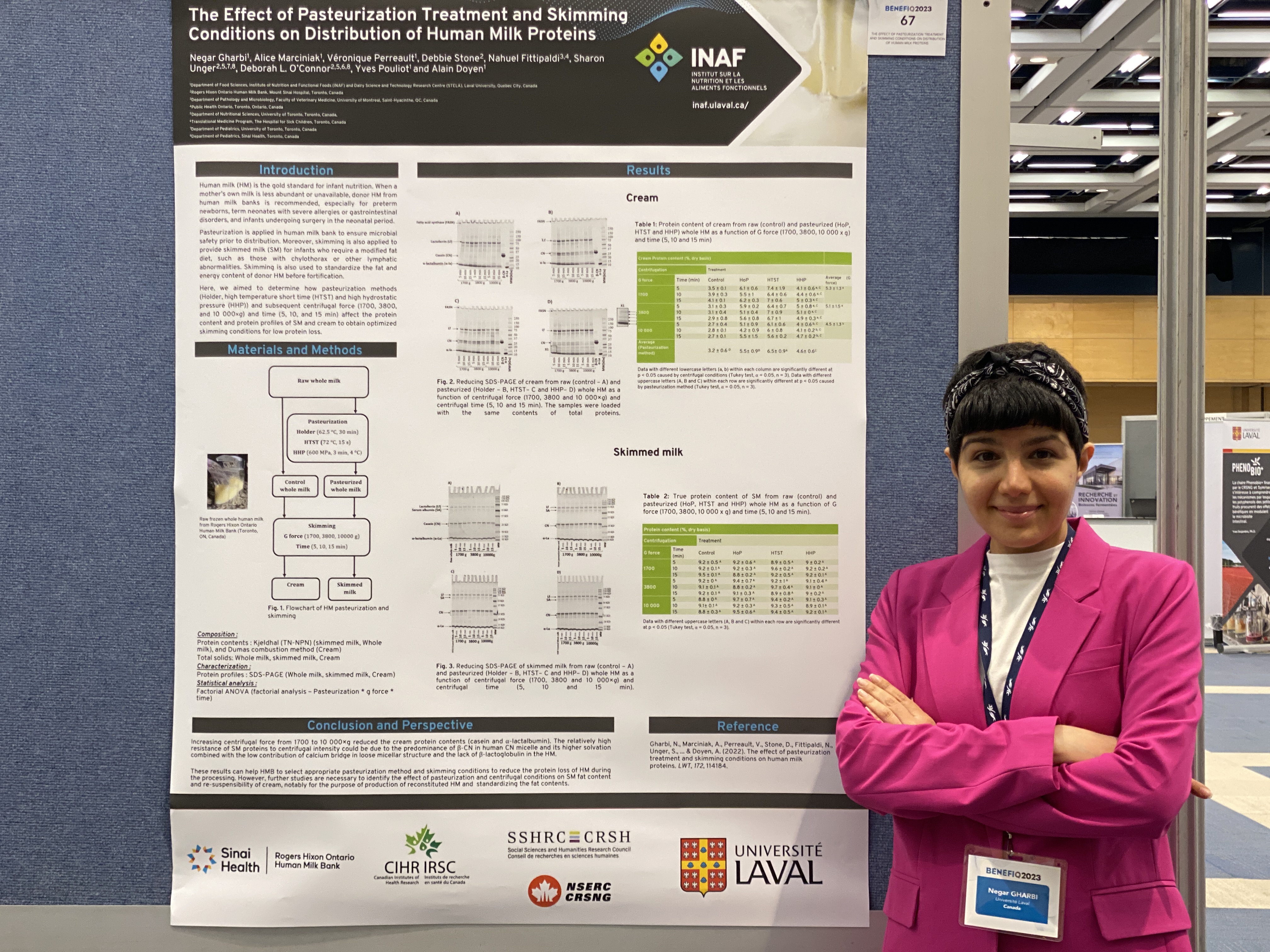Publications
Application of pressure homogenization on whole human milk pasteurized by high hydrostatic pressure: Effect on protein aggregates in milk fat globule membrane and skim milk phases
- Date de publication : 2024-05-28
Référence
N. Gharbi, D. Stone, N. Fittipaldi, S. Unger, D. O'Connor, Y. Pouliot, A. Doyen. 2024. Application of pressure homogenization on whole human milk pasteurized by high hydrostatic pressure: Effect on protein aggregates in milk fat globule membrane and skim milk phases. Food Chemistry, 455, 39863.
Information Complémentaire
Lien vers l'article: https://www.sciencedirect.com/science/article/pii/S0308814624015139
Mot(s) Clé(s)
Lait humain Hautes pressions hydrostatiques Homogénéisation Membrane du globule de gras Agrégats protéiques du lait écrémé Caséines Lactoferrine
Résumé
This study explored the impact of homogenization (at pressures of 16, 30, and 45 MPa) on both raw and high hydrostatic pressure (HHP)-treated human milk (HM). It focused on protein compositions and binding forces of soluble and insoluble fractions for both milk fat globule membrane (MFGM) and skim milk. Mild homogenization of HHP-treated milk increased lactoferrin (LF) levels in the insoluble fractions of both MFGM and skim milk, due to insoluble aggregation through hydrophobic interactions. Intense homogenization of HHP-treated milk decreased the LF level in the MFGM fractions due to the LF desorption from the MFGM, which increased LF level in the insoluble skim milk fraction. Homogenized-HHP treated milk showed noticeably higher casein (CN) level at the MFGM compared to homogenized-raw milk, attributed to HHP effect on CN micelles. Overall, the combined use of HHP and shear-homogenization should be avoided as it increased the biological proteins in insoluble fractions.


